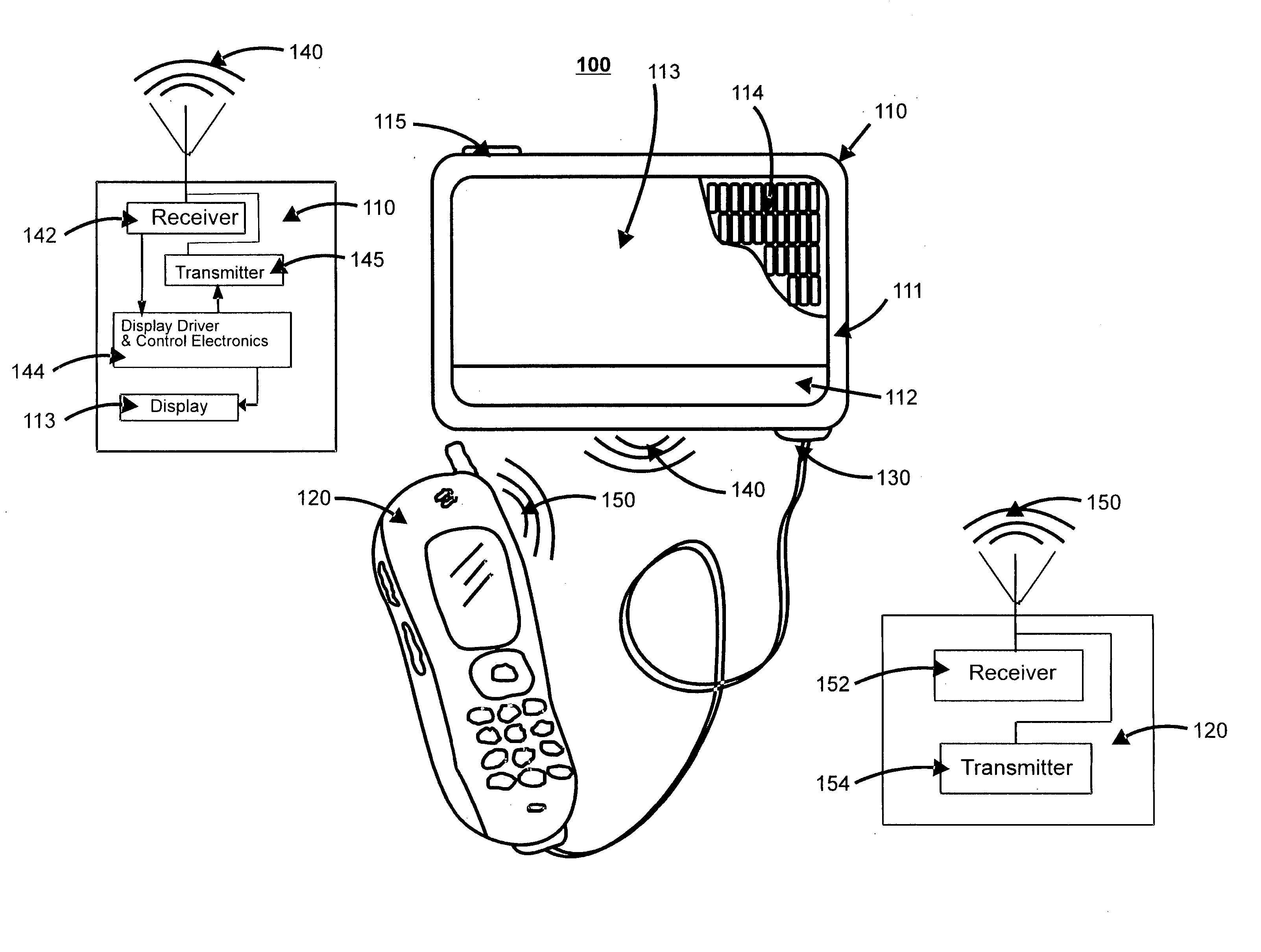Remote cholesteric display
a technology of cholesteric display and remote control, which is applied in the field of remote cholesteric display, can solve the problems of low power, difficult or impossible observation of many information on the small display of pda, and the recent achievement of drapable liquid crystal display, etc., and achieve the effect of reducing the cost of fabricating the display and conserving spa
- Summary
- Abstract
- Description
- Claims
- Application Information
AI Technical Summary
Benefits of technology
Problems solved by technology
Method used
Image
Examples
Embodiment Construction
[0041] The present invention features an apparatus that includes a remote display device with a larger screen than an associated handheld or otherwise portable communications device. FIG. 1 shows the inventive apparatus 100 including a handheld remote display device 110 with a wireless connection 140 and 150, to a smaller portable electronic communications device, illustrated here as a cellular telephone 120. The device 120 is attached to the remote display 110 through an optional cable 130 that enables power to be supplied to the device 120.
[0042] The remote display device 110 includes a cholesteric reflective display 113 adapted to display images such as text messages, documents, calendars, graphics, photographs or other information supplied by the electronic device 120. Device 120 can be a cellular telephone (“cell phone”), camera, electronic book (“e-book”), personal digital assistant (“PDA”), MP3 player, handheld computer, radio, “walkie-talkie,” global positioning system (GPS...
PUM
 Login to View More
Login to View More Abstract
Description
Claims
Application Information
 Login to View More
Login to View More - R&D
- Intellectual Property
- Life Sciences
- Materials
- Tech Scout
- Unparalleled Data Quality
- Higher Quality Content
- 60% Fewer Hallucinations
Browse by: Latest US Patents, China's latest patents, Technical Efficacy Thesaurus, Application Domain, Technology Topic, Popular Technical Reports.
© 2025 PatSnap. All rights reserved.Legal|Privacy policy|Modern Slavery Act Transparency Statement|Sitemap|About US| Contact US: help@patsnap.com



